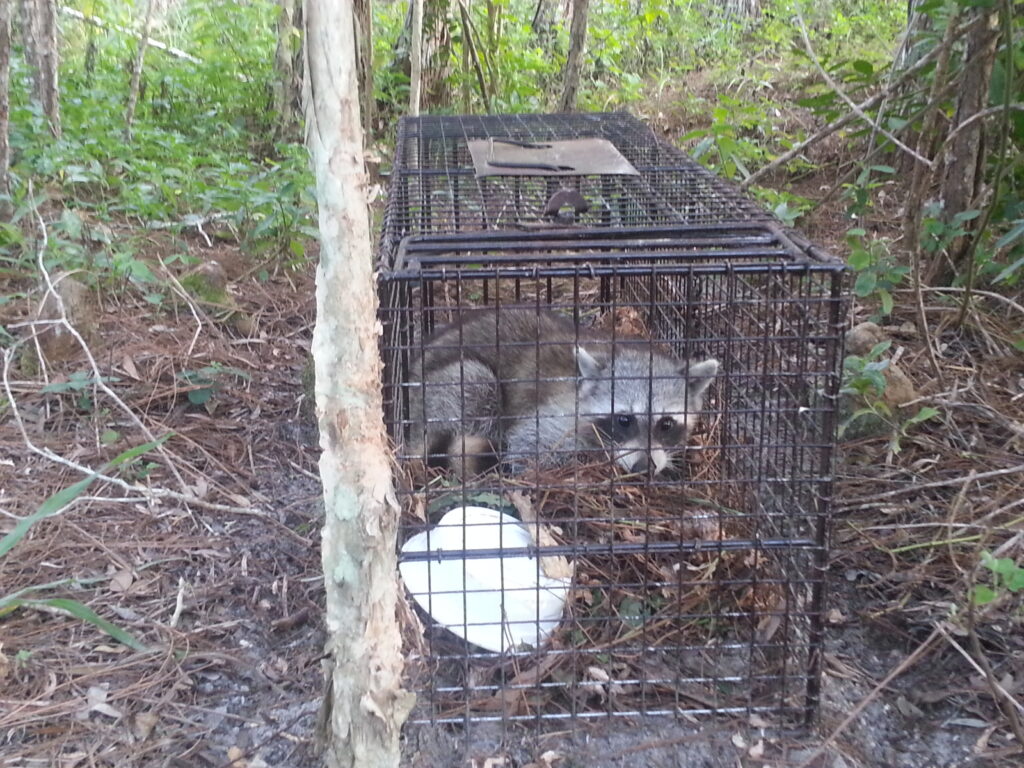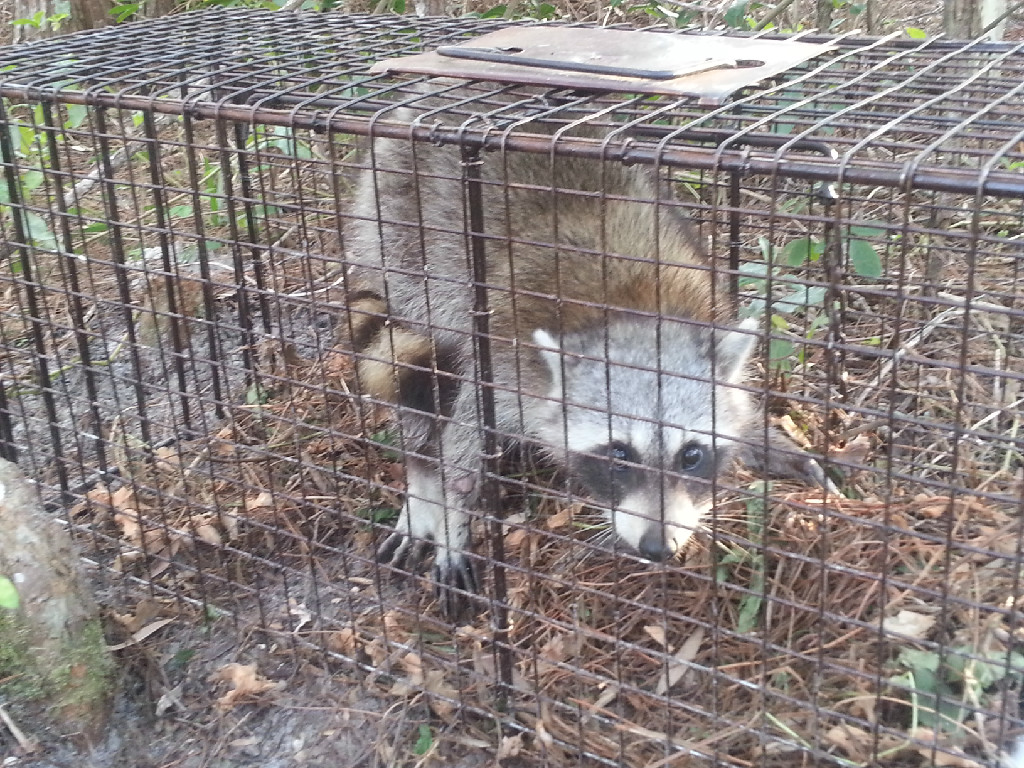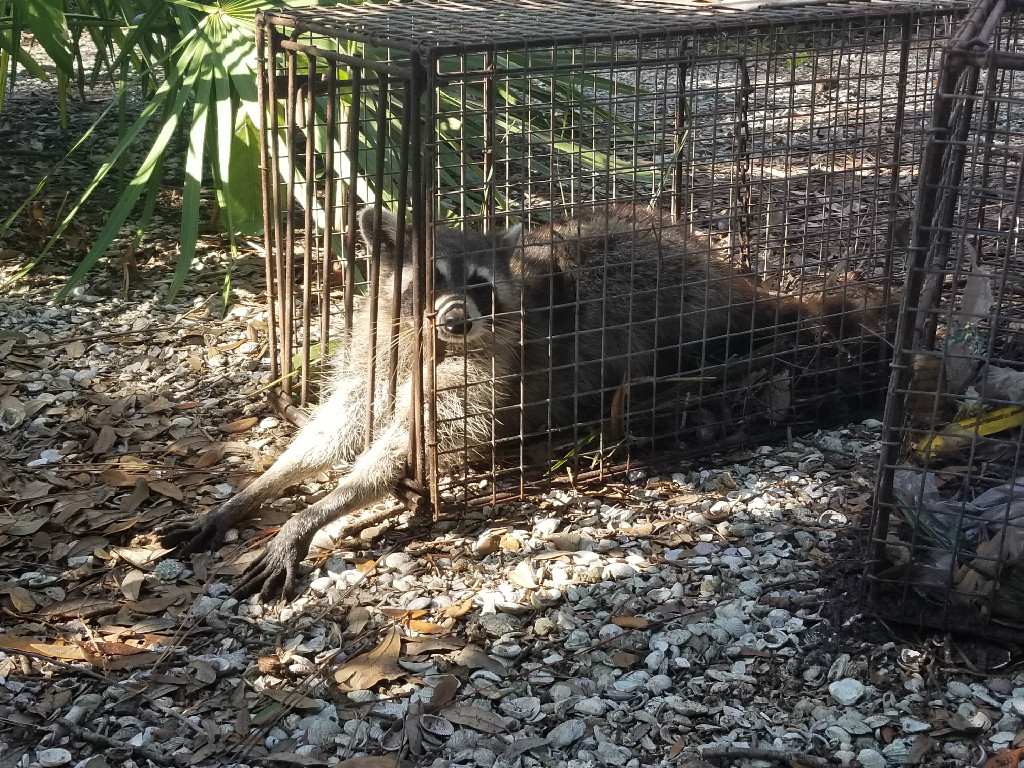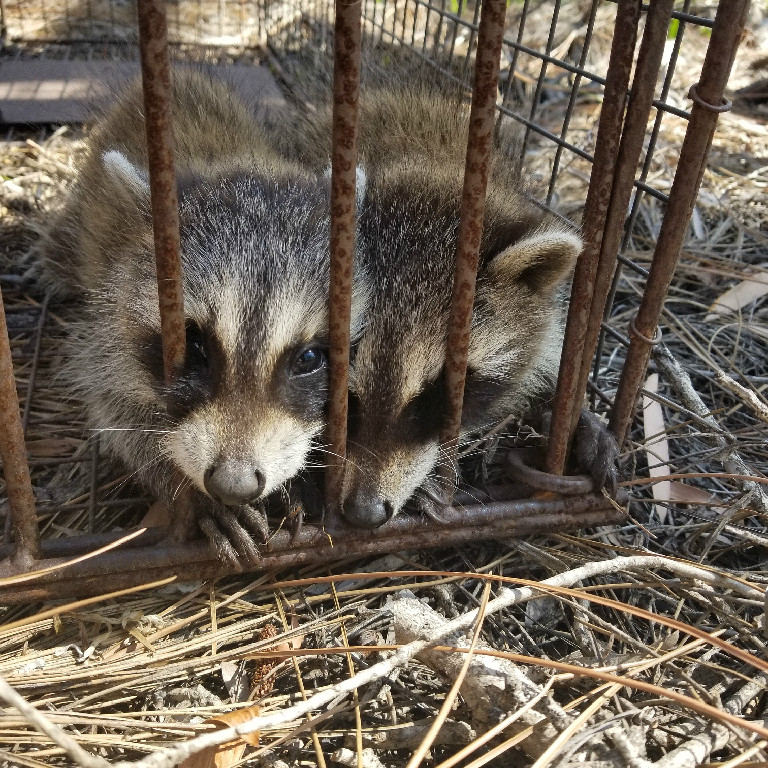
Raccoon: (Procyon lotor)
Raccoons (Procyon lotor), also known as the North America raccoon, common raccoon or coon; is the size of a small dog, which is the largest members of the procyonidae family. Raccoons average between 16 to 28 inches long, not counting its tail that is between 8 to 10 long, weighing 8 to 10 pounds. The males tend to be much larger than the females.
The raccoons color patterns consist of a grayish white or a brownish red fur with a black and white “mask” that surrounds the eyes. Their tails are bushy and have black rings that encircles it. The ears are tufted with fur, their eyes are small and appear a dark brown color. Raccoons have 5 toes on their front and hind feet, which their tracks appear similar to a small child. Raccoons are found throughout the United States, Southern Canada and Northern Mexico, including Florida. This has allowed them to adapt to several environments; including neighborhoods. They prefer to inhibit areas that are located in heavily wooded areas with trees, such as forests, marshes, prairies and residential properties, near fresh water sources.
Raccoons are omnivorous, which mean they consume both plant and animals. Their primary diet consists of frogs, fish, salamanders, amphibians, shellfish, insects, birds, eggs, mice, carrion (dead animals), berries, nuts, vegetation, pet food and garbage.
Raccoons are not typically solitary, as the females often live in social groups called fission – fusion society, sharing common areas occasionally crossing paths while they are feeding or resting. The males often form social groups to maintain their territory and position against potential predators or other male raccoons, however they group usually consists of only 4 males. Their average life span in the wild is between 1 to 3 years, although in captivity they can live over 20 years. They are mainly nocturnal, but can also be active during the day. Raccoons are extremely intelligent creatures, they are capable of opening latches, turning door handles, untying knots, opening jars and opening garbage cans. They can walk, run or climb. Their sense of smell is greater at close distances. They communicate by barking, hissing, growling and using their paws to claw or scratch. Raccoons do not hibernate in the winter months, but they do tend to sleep for several days in their dens, which are in tree holes or branches, fallen logs, abandon structures and attics. When raccoons mate, the males roam their territory seeking females to mate with during their “heat” period which is only 4 to 5 days. This occurs during the months of January through March, however in the southern states such as Florida they tend to mate in later months. Their gestation period is between 63 to 65 days, having an average litter of 2 to 5 kits, also known as cubs; are born with lightly colored fur and its distinctive black mask, they are also blind and deaf. Their ear canals open around 19 to 23 days, before their eyes open which is around 3 to 5 days later. The cubs weigh between 2 to 3 ounces and are about 4 inches long. Once the cubs are between 5 to 6 weeks, they begin to explore outside of their dens, consuming solid foods. The female raises their young without the help from the male. The cubs are completely weaned by the time they are 16 weeks old. Normally in the fall the cubs begin to leave their mother.
Raccoons are known to become infected with both diseases and parasites, these include rabies, distemper, leptospirosis, listeriosis, tetanus, tularemia, round – worm and heart-worms. The leading cause of death in raccoons is the disease distemper. This disease cannot be transmitted to humans, although the parasite round – worm can be transmitted to humans through contact with the raccoons feces.
Raccoons cause damage to wiring, walls, insulation and soffit, when they den in attics of homes; causing foul orders from defecating and urinating and in some cases, when their young die. They clutter your yard with exposed garbage bin remains.


